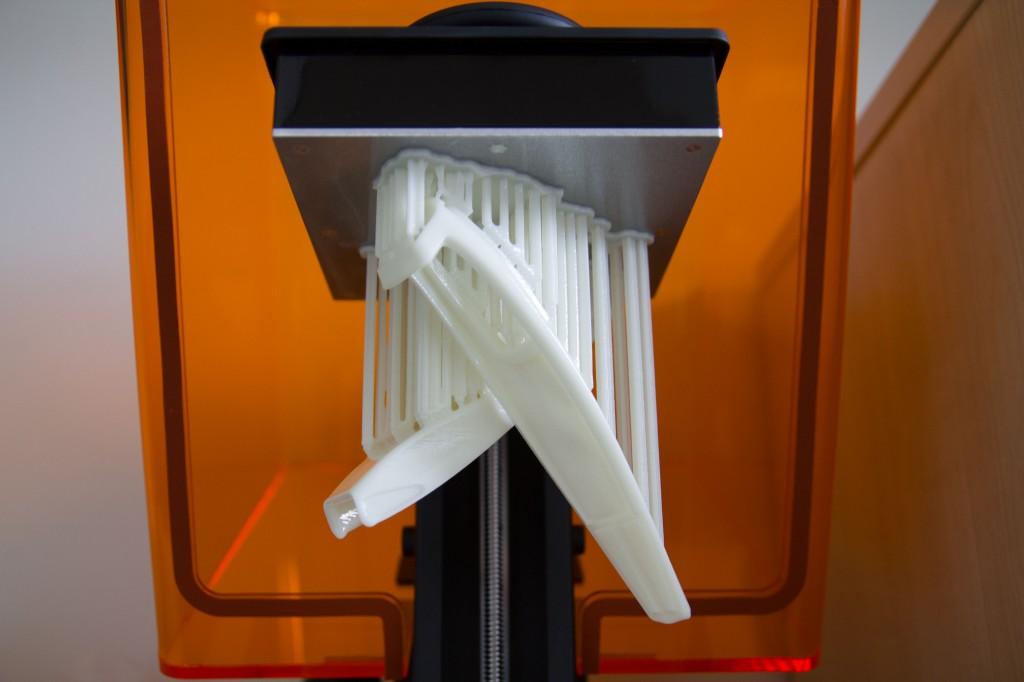 It is always fun to think about the future; to close our eyes, and dream of a time when technology has advanced further along, making our lives easier, longer, healthier, and more efficient.
It is always fun to think about the future; to close our eyes, and dream of a time when technology has advanced further along, making our lives easier, longer, healthier, and more efficient.
Students at Brunel University in Uxbridge, England were recently asked to do just this, and what they came up with was quite a sensational idea. The idea, which one of the students working on this project, Andrew Guscott, says was then conceptualized as a tangible model via 3D printing, was for a device called “Suture.” Suture is a concept for the year 2030 which aims to completely remove the need for medical stitches, while also preventing the scarring of human tissue.
Most of us have had stitches at one point in our lives, and we all know that once those stitches are either removed or have dissolved, we are left with an ugly scar. This scar most likely will remain with us for the rest of our lives. The idea behind Suture is the utilization of high-intensity focused ultrasound (HIFU) to fuse damaged skin back together, leaving no scarring whatsoever.
While the technology isn’t being used yet for this purpose, Guscott must believe that it has the potential to do so. HIFU has been under investigation for many years for use within the medical field. Researchers hope to one day be able to perform “bloodless surgery” without the need for scalpels, or sutures. Some researchers believe that ultra high intensity ultra sound will be capable of destroying cancerous tissue in a very precise manner, while some think it will be able to completely numb a person from pain. The theory behind using HIFU for suturing skin together is based on its ability to heat blood and tissue to an extremely high temperature but only affect a tiny portion of that tissue, perhaps the size of a grain of rice. This could potentially allow for the suturing of skin without affecting surrounding tissue.
 In order to create a tangible model of the Suture device, Guscott says a Form 1 3D printer by Formlabs was used for almost the entire fabrication.
In order to create a tangible model of the Suture device, Guscott says a Form 1 3D printer by Formlabs was used for almost the entire fabrication.
“All parts were printed on a standard Form1, except the screen, which is acrylic,” explained Guscott. “The ‘head’ was printed in clear and polished on the outside, sand blasted on the inside. The rest was printed with MadeSolid white resin (very early batch).”
We have seen before how incredibly amazing some of the clear resins turn out once printed on a Form 1 3D printer, and then post processed. There has even been a 3D printed magnifying glass printed via this method. To mimic the aluminum unibody of the device, Guscott and team used MadeSolid white resin, then sanded it down, and finished it with silver paint and matte lacquer. As you can see, it does look very much like aluminum. The orange button, located on the side, was 3D printed with clear resin, and then finished with orange gloss paint. All in all, the design turned out quite amazing looking, especially for a device that was almost entirely 3D printed.
Of course this is just a concept model, and doesn’t actually work, but it certainly goes to show that high quality, injection molded-like parts can be achieved using the SLA technology presented by the Form 1 3D printer. Will we ever see a device like this in the future? We very well may!
What do you think about the quality achieved via Formlab’s 3D printer, when combined with some interesting post-processing techniques? Discuss in the 3D Printed ‘Suture’ forum thread on 3DPB.com.
Subscribe to Our Email Newsletter
Stay up-to-date on all the latest news from the 3D printing industry and receive information and offers from third party vendors.
You May Also Like
Precision at the Microscale: UK Researchers Advance Medical Devices with BMF’s 3D Printing Tech
University of Nottingham researchers are using Boston Micro Fabrication‘s (BMF) 3D printing technology to develop medical devices that improve compatibility with human tissue. Funded by a UK grant, this project...
3D Printing Webinar and Event Roundup: April 21, 2024
It’s another busy week of webinars and events, starting with Hannover Messe in Germany and continuing with Metalcasting Congress, Chinaplas, TechBlick’s Innovation Festival, and more. Stratasys continues its advanced training...
3D Printing Webinar and Event Roundup: March 17, 2024
It’s another busy week of webinars and events, including SALMED 2024 and AM Forum in Berlin. Stratasys continues its in-person training and is offering two webinars, ASTM is holding a...
3D Printed Micro Antenna is 15% Smaller and 6X Lighter
Horizon Microtechnologies has achieved success in creating a high-frequency D-Band horn antenna through micro 3D printing. However, this achievement did not rely solely on 3D printing; it involved a combination...































